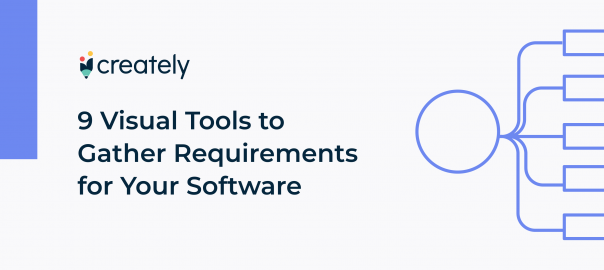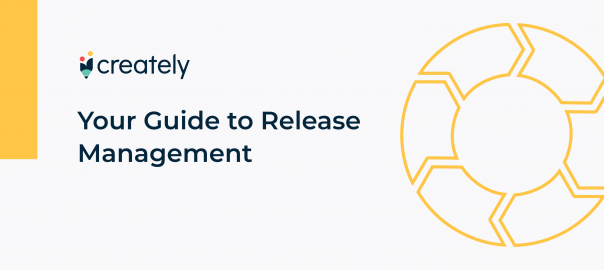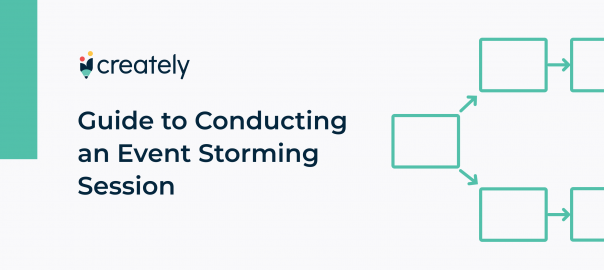Product management has many moving parts, but any product manager will tell you that the hardest part of the job is deciding what to build when. A list of good feature ideas may be endless but time, resources, money, and energy are not. Prioritizing potential features from a long list means deciding on what’s important, realistic, and urgent. In this article, we will look at some of the best ways to prioritize features and the visual tools you can use to align teams and make collective decisions on how to manage your product backlog.
Why Feature Prioritization Is so Hard:
In a study conducted by Mind the Product Survey, 49% of product managers said that their biggest challenge was not being able to conduct proper market research to validate whether the market truly needs what they are building. This is largely due to the haphazard nature in which feature requests come in and not having standardized ways to measure the impact of working on a particular feature.
Personal Biases: The decision to build a particular feature is oftentimes not just a product decision, but a personal one. Every single feature idea represents someone’s hard work and opinion. In large organizations, with multiple stakeholders with different levels of investment and control, people in higher positions can insert their choices or opinions without the necessary data or understanding and consequences. All too often product managers fall prey to HiPPO ( Highest Paid Person’s Opinion) and prioritize features that have no lasting value in the development of products.
Sales and Support Requests: They are often the loudest people at the table and can be difficult to ignore. While it is important to listen to the sales team as they are closest to interacting with customers, features shouldn’t be prioritized in a very reactionary manner without considering the long-term value it will add to the customer.
Isolated ROI: Often the product vision is set aside to build features that will achieve short-term revenue. But more income doesn’t necessarily equate to a better user experience. Not being tempted by short-term monetary gains is important because in the long run, happier customers are what will bring you the most success.
How Constraints Help in Prioritization:
Constraints can be a good thing. Working with limited time, people, and money can serve as prioritization filters that force you to make tough but important decisions. Making choices based on constraint-specific questions like whether you have the time to build this or the right skill set allows you to focus your energy in more efficient avenues. Generally speaking, constraints could be people, time, or dependency-based and create a framework around which the most optimal decisions have to be made. Therefore, it is critical to fully understand your constraints before making feature decisions.
How to Prioritize Work:
To take personal biases and reactionary based decisions out of the equation, it is useful to look at feature prioritization through the following lenses:
Feasibility: These are the technical implications that need the inputs of back-end engineers, UI designers, and front-end developers. It involves figuring out how technically possible a feature is given the current resources and tools you have. This allows you to frame the question differently and allows you to go from asking “Should we build this?” to “Can we build this in the first place.”
Desirability: This involves the analysis of focusing on the customer experience. The most basic question to answer here is “Do customers actually want it?” It is important to evaluate every feature request against what value it will provide to the end-user. Tools like the house of quality template can help in this evaluation, as they allow teams to map customer needs against design features. This involves talking to researchers, UX designers, marketers, and support, as well as going through any user tests and validation you may have already completed.
Viability: This involves putting feature requests in context with the overall business goals. It entails deciding whether a particular request fits the overall strategy and requirements of the market. By talking to executives and other product managers, you need to understand how a particular feature fits into the overall ecosystem.
Visual Tools to Guide Feature Prioritization:
Effort/ Impact Scale
After evaluating which features are worth pursuing, you still have to decide which features you will work on first. A great way to visualize your options and come to a collective decision with your team is to plot an Effort/ Impact Matrix. This simple 2X2 grid represents the different levels of effort required to build a feature and visualizes the impact that feature will have.

The goal here is to find the feature that has the lowest effort but will yield the highest impact. This activity is best done by gathering a group of diverse teammates and getting them to list down a feature, explain it, and place it on an online collaborative whiteboard like Creately. The group then collectively votes on where it should be placed on the grid.
RICE Framework
Sometimes feature prioritization in more detail. The RICE framework is a method to standardise your evaluation criteria and make informed decisions based on the information available. Each feature idea is evaluated on the basis of metrics and given a score accordingly
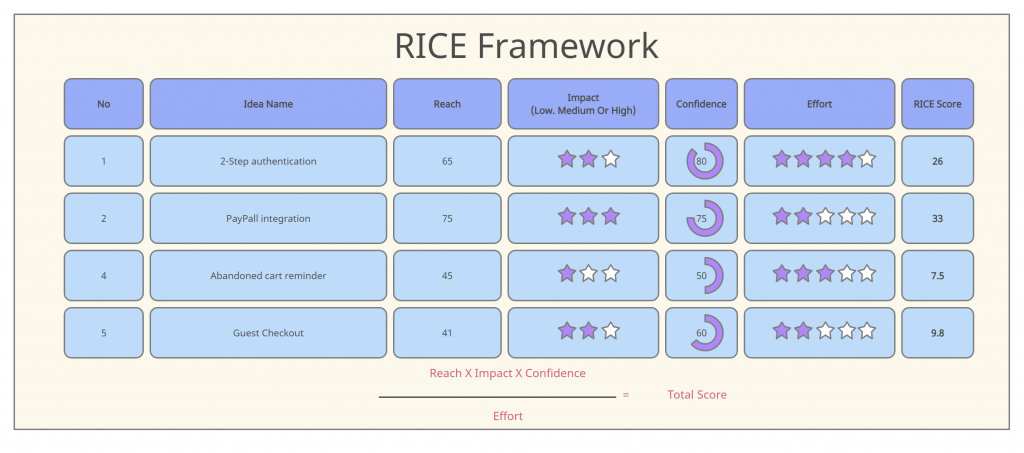
Reach: Determine how many people your project will affect. Reach is usually measured by the number of people impacted within a given period of time. Assigning tangible data will help you come up with a more meaningful RICE score.
Impact: Impact measures the consequence of your reach and the effect it will have. Impact can be hard to quantify so teams usually use a scale of 1 to 3 to estimate low, medium, and high impact tasks.
Confidence: Confidence is evaluated by how certain you are that an action you take will have the desired result. Confidence is usually measured as a percentage.
Effort: With time and resources limited, you need to determine if a task is worth it and consider the amount of time it will take to execute a project. Effort is measured in person-months, which is the amount of work that one team member can complete in one month.
After you have a number assigned for each category, you can calculate your RICE score. Do this by multiplying reach, impact, and confidence and dividing the total by effort. The resulting score gives you “total impact per time worked”—a powerful number for prioritizing features accurately.
Kano Model
The Kano Model is a feature prioritization technique that identifies features in a product roadmap based on the likelihood of them satisfying customers. It helps come up with strategically sound decisions by weighing a high-satisfaction feature against its cost to implement. Product managers can use this model when prioritizing new features by grouping them into categories that range from those that could disappoint customers to those that are likely to satisfy or even delight customers.
With the Kano Model, each potential feature is broken down into different categories based on the emotional response expected from users.
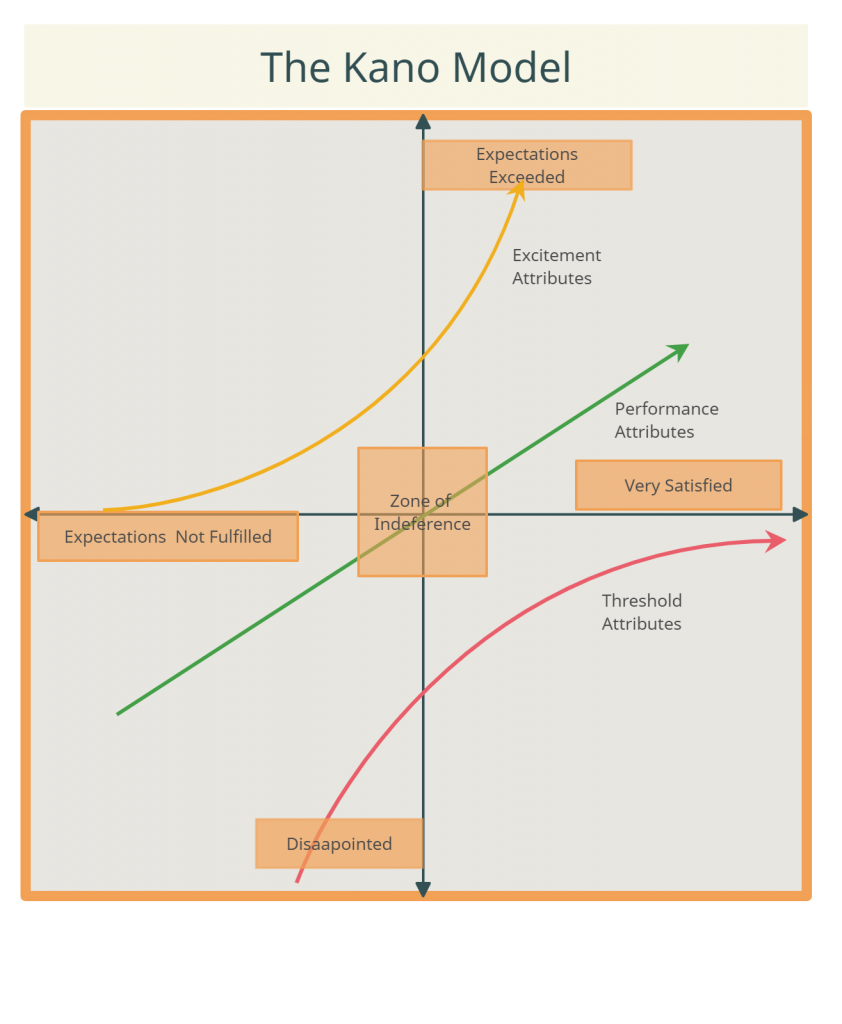
Attractive Needs: These are features that aren’t strictly necessary, but will greatly increase the levels of satisfaction of customers if implemented.
Performance Needs: These features are the ones that have a proportional relationship between functionality and satisfaction; the more we provide, the more satisfied our customers become.
Basic Needs: These are the features that customers expect your product to have. If your product doesn’t have them, customers will consider your product incomplete.
Story Mapping:
This is a great way to identify the Minimum Viable Product by organizing and prioritizing user stories and the development releases. The idea is based on the concept of mapping out the workflow of your product from beginning to end.
It is done in 3 steps;
- Create the workflow using cards or a Kanban board, arranging the cards from the start of the customer experience to the end.
- From top to bottom, order the most important things to develop.
- Finally, you create slices of releases based on the prioritization.
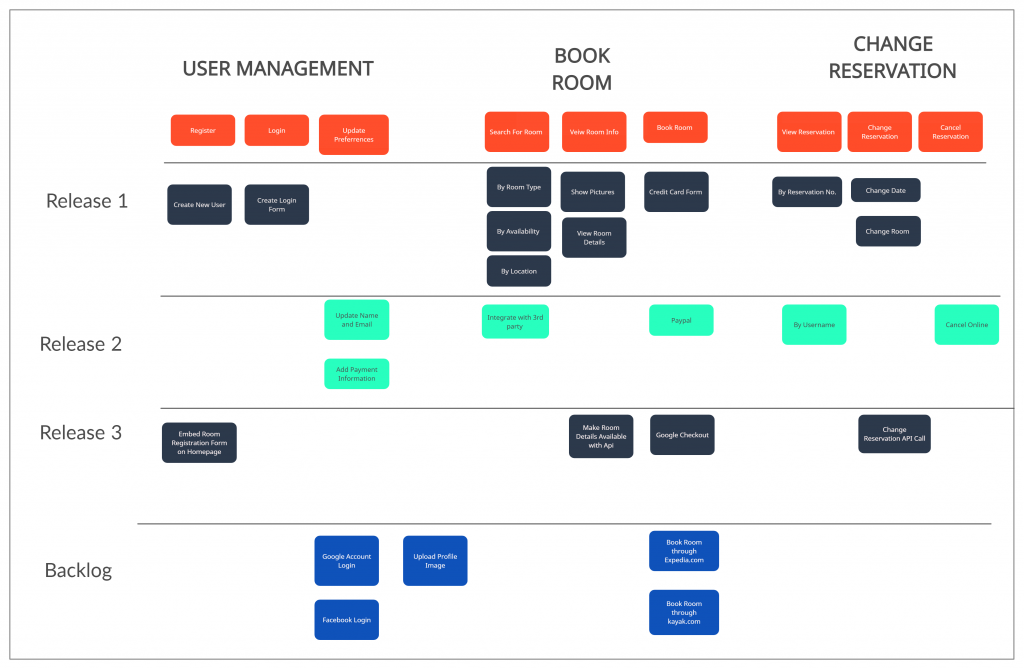
Final Thoughts:
Feature prioritization is part of a broader strategic planning process and needs to always be put into context. The prospect of building new features and experimenting with new functionality can be extremely exciting. But one of the most important roles of a product manager is to be the voice of reason. This means constantly mapping release schedules and roadmaps back to the value of the product. It is important to not let short-term results outweigh your long-term strategy.
The act of prioritization is never over and you must constantly reprioritize based on business needs and market changes. Although you worked hard to prioritize features, they may change in the future. Make sure your list continues to align with your big picture by taking the time to go through it.
What are some of the best techniques you have come across for product prioritization? Let us know in the comments.

